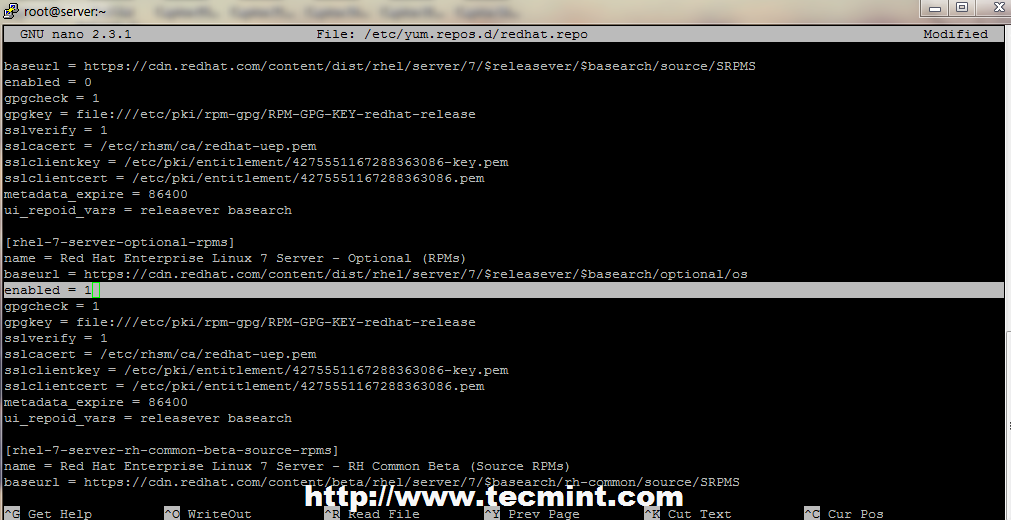

- #REDHAT REPOSITORY XSCREENSAVER INSTALL#
- #REDHAT REPOSITORY XSCREENSAVER UPDATE#
- #REDHAT REPOSITORY XSCREENSAVER SOFTWARE#
- #REDHAT REPOSITORY XSCREENSAVER PASSWORD#
- #REDHAT REPOSITORY XSCREENSAVER WINDOWS#
#REDHAT REPOSITORY XSCREENSAVER INSTALL#
If you ever face a similar situation, you can add this app back to your system through the following command: $ sudo apt-get install gnome-startup-applications Note: Although I have been using the Startup Applications utility for a long time, I could not find it installed on my Ubuntu while working on this article. Open the Startup Applications utility either by locating it in the Applications list or simply by searching for it through the system Application Launcher search as follows. Thus, it is best to add the Xscreensaver utility to your system startup. However, we would not like starting it every time we reboot our system in order for the screen saver program to be active. The Xscreevsaver now appears in the Applications listing and can be launched anytime. Important: For this screen saver application to be removed completely, you need to restart your system. For the system to not use this screensaver app anymore, let us remove it through the following command: $ sudo apt-get remove gnome-screensaver

#REDHAT REPOSITORY XSCREENSAVER SOFTWARE#
In order to verify that the software is indeed installed on your system and also to get the version information, run the following screensaver command: $ xscreensaver -helpĪs mentioned above, the default Gnome Screensaver would only display a blank screen when your system is idle for a long time. The process may, however, take some time depending on your Internet speed. Enter Y and then hit enter the software and the relevant packages will then be installed on your system.
#REDHAT REPOSITORY XSCREENSAVER PASSWORD#
The system might ask you the password for sudo and also provide you with a Y/n option to continue the installation. Now you are ready to install the Xscreensaver, and some required packages you can do so by running the following command as sudo: $ sudo apt-get install xscreensaver xscreensaver-gl-extra xscreensaver-data-extra Please note that only an authorized user can add, remove and configure software on Ubuntu.

This helps you in installing the latest available version of a software from the Internet.
#REDHAT REPOSITORY XSCREENSAVER UPDATE#
The next step is to update your system’s repository index through the following command: $ sudo apt-get update Open your Terminal application either through the system Application Launcher Search or through the Ctrl+Alt+T shortcut. The Xscreensaver package is available in the official Ubuntu repositories (ubuntu-bionic-universe) and can easily be installed through the command line using the apt-get command. We have run the commands and procedures mentioned in this article on a Ubuntu 18.04 LTS system. In this article, we will describe how you can install the Xscreensaver utility, automatically enable it at startup, and use it to set screensavers on your system depending on your specific requirements. With modern display screens, this is not the case but when we miss something, there should be a way to get it back! Initially, these screensavers were your operating system’s way of limiting Phospor burning on plasma and CRTs.
#REDHAT REPOSITORY XSCREENSAVER WINDOWS#
However, we are so used to running those moving patterns and images on our idle screens, such as on Windows and Mac, that we miss them on Ubuntu. You can verify that this application is running on your system by entering the following command in your Ubuntu command line, the Terminal: $ gnome-screensaver In recent past, the Gnome developers have altered the application in a way that it only runs a blank screen when your Ubuntu screen remains idle for a specific time. This is a record on the CVE List, which provides common identifiers for publicly known cybersecurity vulnerabilities.By default, your Ubuntu systems are running the Gnome Screensaver application. Necessarily indicate when this vulnerability wasĭiscovered, shared with the affected vendor, publicly The CVE ID was allocated or reserved, and does not The list is not intended to be complete.ĭisclaimer: The record creation date may reflect when Note: References are provided for the convenience of the reader to help distinguish between vulnerabilities. Rdesktop 1.3.1 with xscreensaver 4.14, and possibly other versions, when running on Fedora and possibly other platforms, does not release the keyboard focus when xscreensaver starts, which causes the password to be entered into the active window when the user unlocks the screen.


 0 kommentar(er)
0 kommentar(er)
